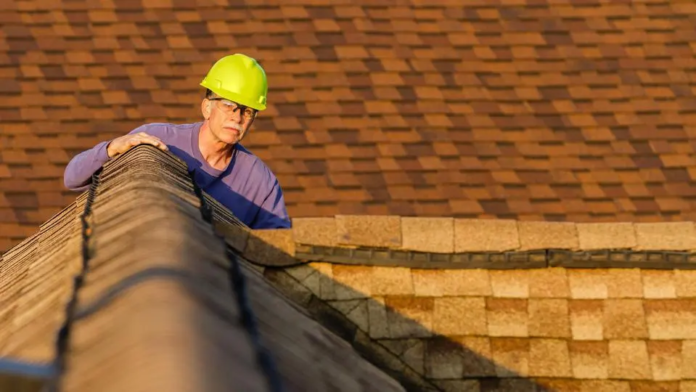Roof installation is a critical aspect of home construction, ensuring the safety, durability, and energy efficiency of a building. Proper roof installation techniques not only provide long-term protection against the elements but also enhance the overall aesthetic appeal of a home. Equally important is the protocol for residential roof inspections, which helps identify potential issues early and ensures the longevity of the roof. This article delves into the essential techniques for roof installation and the importance of regular residential roof inspections.
Key Roof Installation Techniques
1. Proper Planning and Design
The first step in any successful roof installation is proper planning and design. This includes selecting the appropriate roofing materials based on the climate, architectural style, and budget. Common roofing materials include asphalt shingles, metal, wood, tile, and slate. Each material has its advantages and considerations, such as durability, cost, and maintenance requirements.
2. Ensuring a Solid Foundation
A strong foundation is crucial for a durable roof. This involves installing a solid roof deck made of plywood or oriented strand board (OSB). The deck must be securely fastened to the roof trusses to provide a stable base for the roofing materials. Any weak or damaged sections of the roof deck should be repaired or replaced before proceeding with the installation.
3. Installing Underlayment
Underlayment is a protective layer placed between the roof deck and the roofing material. It acts as a barrier against water infiltration, especially during heavy rains or snowmelt. Common types of underlayment include felt paper and synthetic materials. Proper installation of underlayment ensures an additional layer of protection and helps extend the life of the roof.
4. Proper Flashing Installation
Flashing is used to seal joints and edges where the roof meets other structures, such as chimneys, skylights, and vents. Properly installed flashing prevents water from seeping into these vulnerable areas, reducing the risk of leaks and water damage. Flashing should be made of durable materials like aluminum or galvanized steel and installed with precision to ensure a watertight seal.
5. Ventilation and Insulation
Adequate ventilation and insulation are vital for a roof’s longevity and energy efficiency. Proper ventilation prevents heat and moisture buildup in the attic, which can lead to roof deterioration and increased energy costs. Insulation helps maintain a consistent indoor temperature and reduces the strain on heating and cooling systems. Together, they create a balanced environment that protects the roof and enhances the home’s overall efficiency.
6. Professional Installation
Hiring professional roofing contractors is essential for a successful roof installation. Experienced contractors have the skills, tools, and knowledge to ensure that all components are installed correctly and meet local building codes. They can also provide valuable advice on the best materials and techniques for your specific needs.
Residential Roof Inspections Protocol
Regular residential roof inspections are crucial for maintaining the integrity and longevity of your roof. These inspections help identify potential problems early, allowing for timely repairs and preventing costly damage. A thorough roof inspection protocol should include the following steps:
1. Exterior Inspection
The first step in a roof inspection is a visual examination of the exterior. This includes checking for visible damage, such as missing or damaged shingles, cracked tiles, or rusted metal. Inspect the flashing, gutters, and downspouts for signs of wear or damage. Look for any areas where water may be pooling or where debris has accumulated, as these can indicate potential problem areas.
2. Interior Inspection
An interior inspection involves examining the attic and other interior spaces for signs of water damage, such as stains, mold, or mildew. Check the insulation for signs of moisture and ensure that the ventilation system is functioning properly. Look for any signs of structural damage, such as sagging or cracked beams, which could indicate a more serious issue with the roof.
3. Detailed Component Inspection
During a detailed inspection, each component of the roof is examined closely. This includes checking the condition of the underlayment, flashing, and seals around vents and other penetrations. Inspect the roof deck for any signs of rot or damage, and ensure that all fasteners are secure. Pay special attention to areas where different materials meet, as these are often the most vulnerable to leaks.
4. Documentation and Reporting
A comprehensive inspection report should be created, documenting all findings and recommendations for repairs or maintenance. This report should include photographs of any damage or areas of concern, as well as a detailed description of the issues. Providing homeowners with a clear and concise report helps them understand the condition of their roof and make informed decisions about necessary repairs or maintenance.
5. Regular Maintenance
In addition to regular inspections, ongoing maintenance is essential for the longevity of a roof. This includes cleaning gutters and downspouts, removing debris from the roof surface, and trimming overhanging branches that could damage the roof. Regular maintenance helps prevent minor issues from becoming major problems and extends the life of the roof.
Conclusion
Ensuring the safety and durability of a roof requires a combination of proper installation techniques and regular residential roof inspections. By following best practices for roof installation and adhering to a thorough inspection protocol, homeowners can protect their investment, enhance the aesthetic appeal of their home, and enjoy peace of mind knowing that their roof is in excellent condition. Prioritizing these aspects will not only extend the lifespan of the roof but also contribute to the overall safety and comfort of the home.
